My uncles were in the war - PNG, Palestine and Burma. At Grandma's funeral and wake, after a few beers, my uncles began reminiscing about old times. They spoke of Palestine, sang a soldier's ditty. Then Uncle Bernie said, "Jerry was alright, you could deal with Jerry, it was those little slant-eyed yellow bastards I couldn't stand."
He had been in Burma. He could not forget.
I went to Kanchanaburi not to see the tiger temple or ride an elephant or bamboo raft down the river, I went because of its history. And a brutal and terrible history.
A Life For Every Sleeper
Above: Original track work of the Death Railway
There were 424 thousand metres of track.
13,000 died and are buried along the way.
Over 80,000 Asian labourers died.
For every sleeper laid it cost one human life
120,000 sleepers where laid.
Japanese brutality at its best.
Above: Information Sign
At the beginning of doing this walk this sign reads
The railway has been cleared for a further four kilometres but no improvements have been made to steep or difficult sections. Only those persons in good physical condition should attempt this part of the trail. Walking time from this point to the end and return is 3 hours.
Above: Hellfire Pass ~ Tree of Life
This self-seeded tree grew in the middle of Hellfire Pass. Where once cruelty and death lingered, the appearance of the birth of a new tree gives hope. Tree of life is a metaphor for the livelihood of the spirit.
Above: Railbed
As you walk along this track today, it is a peaceful place with the sound of crickets and cicadas singing and the stones crunching under your walking feet. No-one who comes here shouts or yells - something about the atmosphere begs for the listener to be still and breathe in the winds of today which have overcome the trials of yesterday. It is not until you reach the memorials that you realise it is not all it seems it is not a pretty walk in the country but a living memorial to thousands of men who lived, worked and died many still in their teens or early twenties. Young men who never had the chance to live and learn about the joys of happiness which we take for granted.
So... be still take a quiet time and sit and just do nothing but listen to the wind as it ruffles your hair and the sun beats down overhead as it did oh so many years ago on others who were here first.
HELLFIRE PASS
Cuttings along the railway varied from shallow earth to deep rock. Konyu Cutting, or Hellfire Pass as it was known, is the deepest and largest on the entire length of the railway.
On 25th April 1943 - ANZAC Day - work commenced to excavate the cutting. A workforce of prisoners of war began the task of hacking back the jungle, removing the loose earth and drilling in rock by hand. Little machinery was available. Most of the drilling work was done by the "hammer and tap" men, a process whereby one man would hold and rotate a drill or "tap" while his mate hit the head of the drill with an eight to ten pound hammer.
Above: Sheer rockface - the hill was excavated by hand
'Pick up.
Carry 25 yards or more.
Up the bank.
Dump.
Walk back.'
'On jobs such as cuttings, Nips stood overhead and threw stones all the time irrespective of whether you worked or not.' - Reg Holloway, 2/40th Infantry Battalion, Australian Imperial Force.
Above: In Remembrance
When the hole was deep enough, explosive charges would be used, the broken rock removed by hand and the process began again. The process was slow.
As work fell behind schedule and "speedo" was called, the work rate intensified. Work shifts lasting up to eighteen hours drilled, blasted and removed rock in a continuous operation. The men laboured under intense pressure from the Japanese engineers and Korean guards at the height of the wettest monsoon season for many years. Such was the brutality that 69 men were beaten to death by their guards.
Above: In Memory
Many prisoners-of-war died from cholera, beriberi, dysentery, starvation, and exhaustion. On starvation rations - a cup of boiled rice or millet three times a day - if they were lucky, malnutrition was a big killer.
At night, the cutting was lit by fires, lamps or diesel torches. The eerie light and shadows of guards and gaunt prisoners of war playing on the rock walls suggested the name the site was given - Hellfire Pass.
Above: POW - Original photo
An original photo of a POW standing beside the primitive tripod which was used for levelling the ground of the Death Railway Thailand - Burma
Above: Hellfire Pass, 1944
Original photo of Hellfire Pass (Konyu Cutting) which forms part of the Death Railway, was a particularly difficult section of the line to build, not only because it was the largest rock cutting on the railway, but also because of its remoteness and the lack of proper construction tools during building.
Above: Hellfire Pass today
These rails and sleepers are from the official railway and were relaid in Konyu Cutting in April 1989 by the men of "C" Company 3rd Battalion Royal Australian Regiment.
They were relocated to the current position in 2006.
Above: Memorial
One of the most poignant memories is of a plain little wooden cross that said simply "For my Dad"
Above: Poppies of Remembrance
This humble litte poppy was known as the corn poppy because it flourished as a weed in grain fields. The Flanders poppy as it is now called, grew profusely in the trenches and craters of the war zone. (WW I)
The red Flanders’ poppy was first described as a flower of remembrance by Colonel John McCrea, who was Professor of Medicine at McGill University of Canada before World War One.
Above: The Australian Flag
Above: Hellfire Pass
The plaque on the left is dedicated to Sir Edward "Weary" Dunlop (1907 - 1993) and reads ~
Patron of the Association of and Surgeon of the jungle whose ashes were scattered in this area on 25th April 1994.
From 1942 to 1945 Weary Dunlop and his medical colleagues, in the Armed Services of Great Britain, Australia, Netherlands, India and the United States of America gave devoted service to thousands of sick and dying prisoners-of-war and Asian labourers who were forced to construct and maintain the Burma-Thailand Railway.
These doctors provided leadership, helped alleviate pain and suffering and above all gave reason to live when all real hope seemed lost.
To them we all give thanks.
"When you go home, tell them of us and say we gave our tomorrow for your today"
Above: Hellfire Pass Memorial
Of the 1,000 Australian and British soldiers who took 12 weeks to clear the stretch of mountain, 700 died. They worked around the clock for 16-18 hours a day to complete excavation of the 17 metre deep and 110-m long cutting through solid limestone and quartz rock.
The Hellfire Pass Memorial and Memorial Museum were set up to commemorate these fallen.
Above: 352 Steps
This is the number of steps to reach Hellfire Pass. Many are steep and climbing down and then back up face running with sweat sun beating down I look back at what was once one of the most dreaded railways in history - the "Death Railway" and ask how could so much human suffering and atrocity be caused by one human being to another?
Above: Peace Vessel - Peter Rushforth
Peter Rushforth was a prisoner of war on the Burma Thailand Railway. In 1946 he commenced training as a potter with the Royal Melbourne Institute of Technology. His work is represented in the Australian National Gallery and Australian state and regional galleries as well as private collections all over the world.
Above: Memorial Museum
The Hellfire Pass Memorial Museum complex is an Australian built complex decicated to the memory of all the men and women who worked and died making this railway.
Above: The Staff
Above: Grounds
All those who suffered
And all who died.






















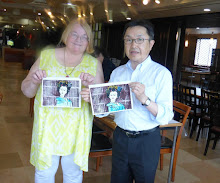























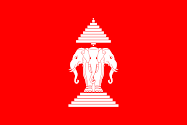

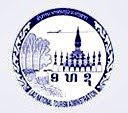
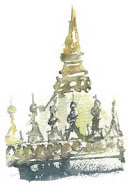
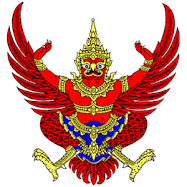
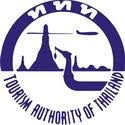
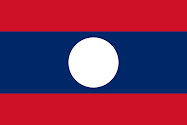



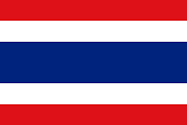


No comments:
Post a Comment